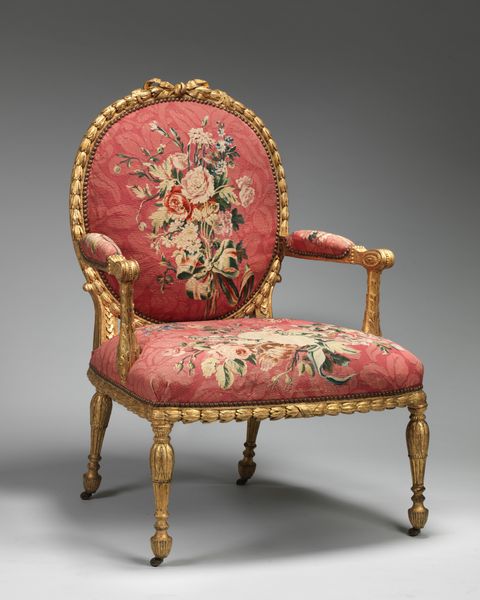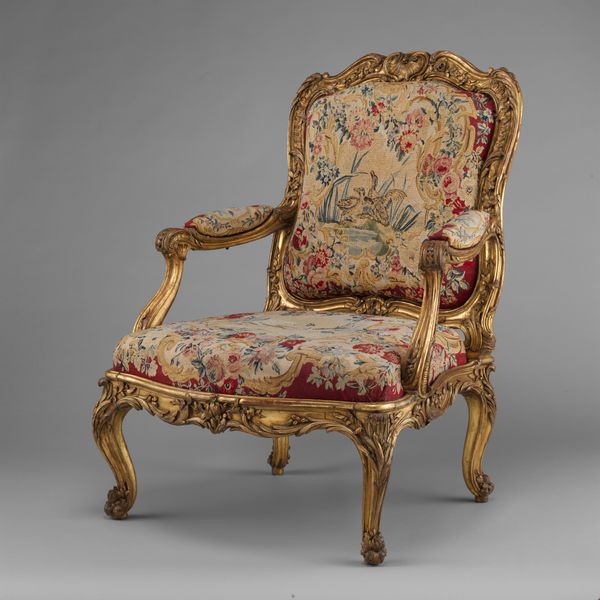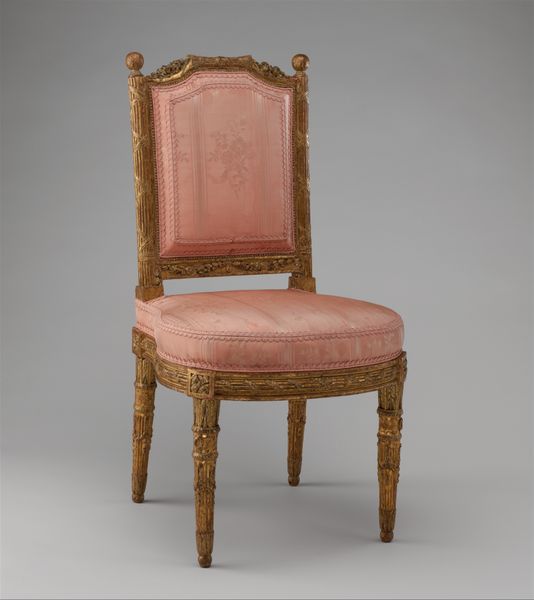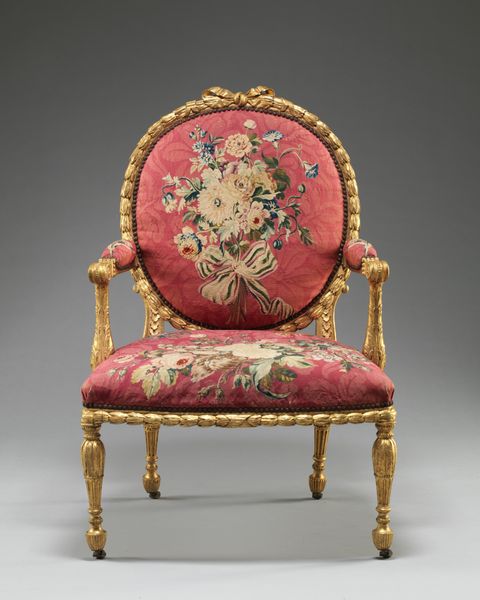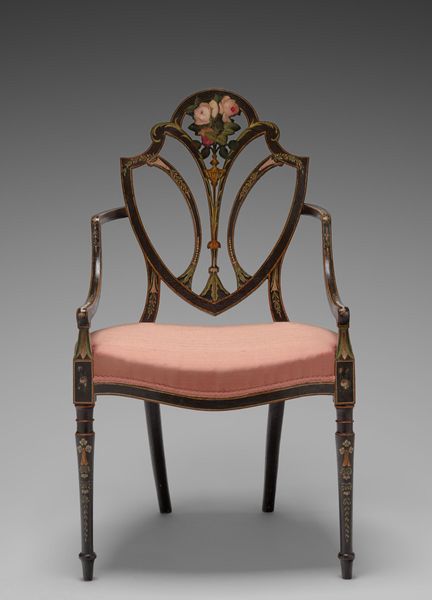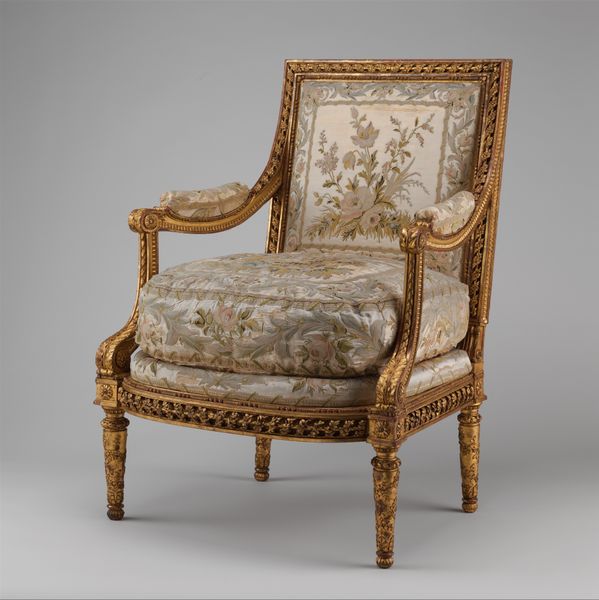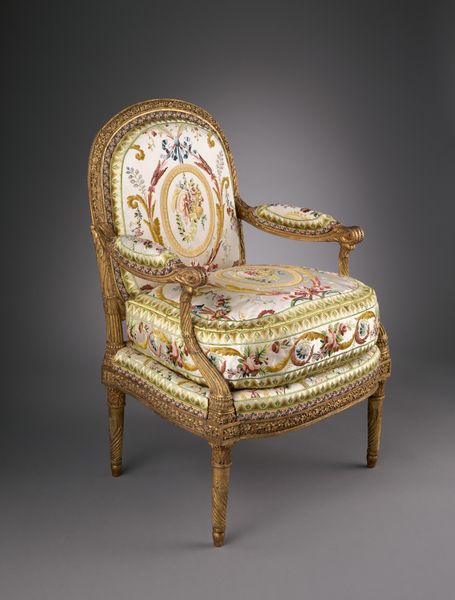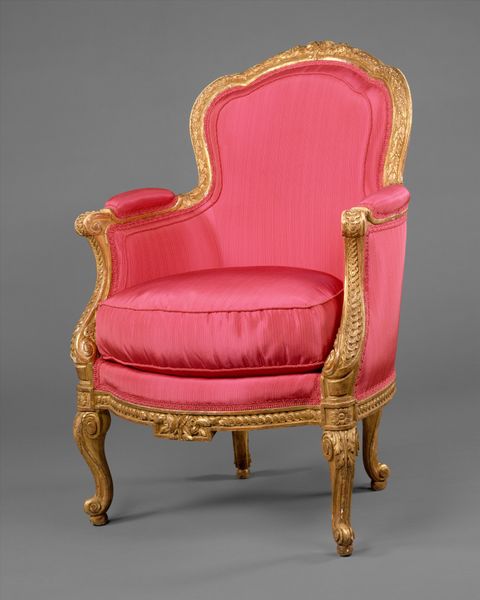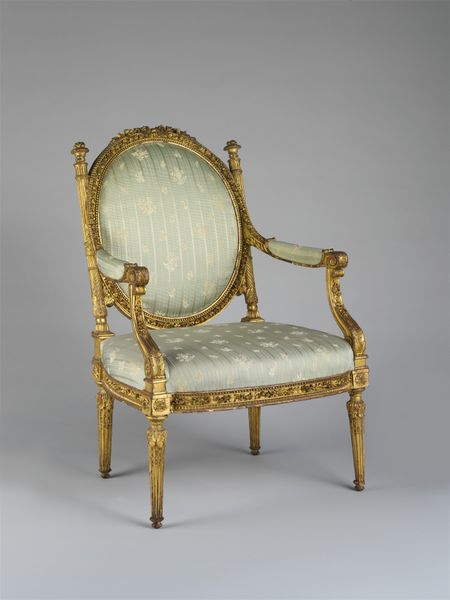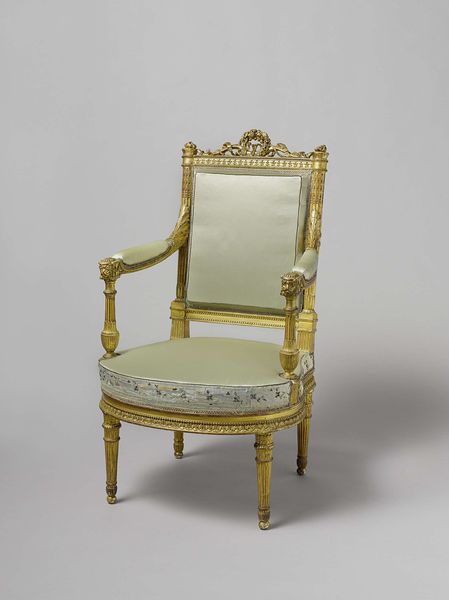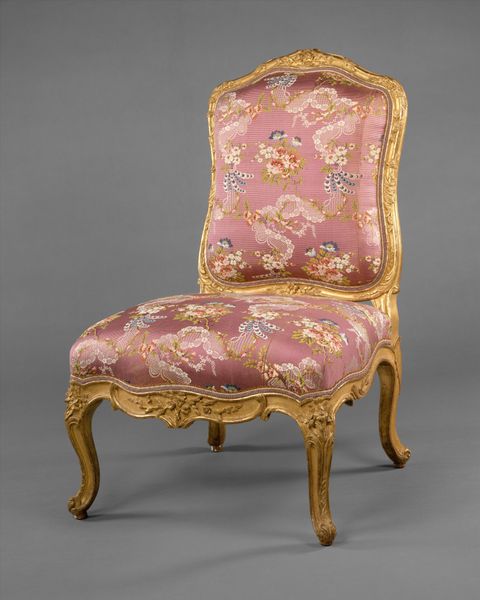
Armchair (Fauteuil à la reine) for Louise-Élisabeth of Parma 1744 - 1754
0:00
0:00
carving, gold, sculpture, wood
#
carving
#
gold
#
furniture
#
sculpture
#
wood
#
decorative-art
#
rococo
Dimensions: Overall: 43 1/2 × 31 1/2 × 27 1/2 in. (110.5 × 80 × 69.8 cm)
Copyright: Public Domain
Curator: Look at this spectacular armchair, a "Fauteuil à la reine" crafted between 1744 and 1754, originally for Louise-Élisabeth of Parma. Nicolas-Quinibert Foliot's workshop produced this exuberant piece, now residing at The Metropolitan Museum of Art. Editor: Wow, it practically vibrates with opulence! The sinuous curves, the glint of gold, and that luscious fabric – it's the visual embodiment of luxury and privilege. Curator: Absolutely. Think of the labor involved. We have the carvers meticulously shaping the wood, the gilders applying layer upon layer of gold leaf, and the textile workers creating the lush upholstery. The entire process involved numerous specialized artisans, all contributing to this symbol of royal status. Editor: It's true, the material choices here articulate clear message: wealth and power. What can you tell me about the structural design, beyond just the obvious Rococo style? Curator: Note how the frame swells and curves, seamlessly transitioning from leg to armrest to back. There isn't a straight line to be found. And this ‘à la reine’ style, meaning 'for the queen,’ features a flat back, which differs from the enveloping 'bergère' style that offered greater privacy. This flat-backed design allows for the sitter's dress to be fully displayed. Editor: The flat back gives an almost planar quality against the three dimensional, flowing forms of the wood and fabric. I’m also seeing how the repetition of shell motifs contributes to this sense of luxuriousness. Curator: Indeed, and this isn’t mere aesthetics; consider how furniture like this served as a backdrop for courtly rituals and displays of power. This chair wasn't just for sitting. It was a stage prop in the theater of the French court. Editor: That gilded stage prop reminds me, if only we knew the conditions under which all that carving and gilding took place, the lives and wages of those anonymous craftspeople who helped create this little throne... Curator: A sobering thought. But here, in this space, we can perhaps acknowledge the multiple layers of meaning, and the complex network of production, that come together in an object like this. Editor: Well, thinking through those angles gives us so much more than just something nice to look at!
Comments
No comments
Be the first to comment and join the conversation on the ultimate creative platform.
